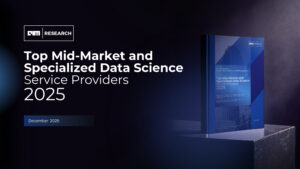In a business landscape frequently captivated by the prospects of artificial intelligence (AI), it’s essential to first ensure the veracity of the foundational data before deploying any technological solutions. Properly understanding the business challenges and selecting the right analytical approaches are key component of success. When AI is considered as a solution, thoughtful implementation and safeguarding measures must be a priority.
Establishing a Robust Data Foundation
Establishing a robust data foundation is crucial for informed decision-making and strategic analytics. Accurate, comprehensive, and reliable data sets are the cornerstone of effective business operations. Data lineage, which involves understanding the origins and journey of data, is critical for ensuring the accuracy of information flowing into decision-support systems. Robust governance structures are also imperative, not just for compliance but as essential elements that enhance the integrity and usability of data across different business units.
By defining a ‘single source of truth’ for each critical domain, whether it concerns customers, products, or services, organizations can establish a strong foundation that supports both day-to-day operations and strategic analytics. A robust data foundation can be established through legacy asset transformation, well-defined governance roles and processes, and regular audits and quality checks. Trusted datasets, which provide consistent and reliable insights across an organization, represent the pinnacle of data foundations. By prioritizing data infrastructure, fostering data fluency across teams, and maintaining their foundations through regular audits and quality checks, organizations can enhance decision-making, operational efficiency, and strategic advantage.
Critical Role of Data Quality in Business Efficiency and AI Effectiveness
Data Accuracy and Integrity: Data accuracy is essential in ensuring that values are correct and consistent, impacting everything from decision-making to AI model performance. Inaccurate data can lead to substantial financial losses and decision-making errors. Similarly, data integrity involves maintaining data’s accuracy and consistency throughout its lifecycle, which is crucial for ensuring business operations are based on reliable and trustworthy information.
Importance of High-Quality Data in AI: The quality of data directly influences the performance of AI algorithms. If the input data is poor, the output will likely be unreliable, leading to inaccurate predictions or classifications, and potential insertion of unintended bias. This scenario underscores the “garbage in, garbage out” principle prevalent in data analytics and AI fields.
Economic Impact of Data Quality: Poor data quality can significantly impact an organization’s financial health. Studies suggest that bad data could cost businesses a significant portion of their annual revenue, highlighting the vital need for high-quality data in improving ROI and overall business performance.
Data Quality Dimensions: Evaluating data quality involves several dimensions, such as accuracy, completeness, consistency, and timeliness. Each of these dimensions plays a crucial role in ensuring that data is fit for its intended use, aiding organizations in making informed decisions and achieving strategic goals.
Balancing Technological Advances with Human Insight in Business Decisions
In the digital age, the allure of making business decisions swiftly through advanced technologies like AI is undeniable. However, it’s essential to maintain a healthy skepticism about the limits of technology and recognize the potential dangers of relying too heavily on these tools. While technology can process data at an unprecedented rate, it does not yet possess the human capacity for ethical reasoning or complex contextual nuances.
Essential Role of Human Oversight: Technology should augment, not replace, human decision-making. Human oversight is crucial as it brings a layer of ethical judgment and contextual awareness that AI systems are not yet equipped to handle. This ensures decisions are not only efficient but also aligned with organizational values and ethical business practices.
Integrating Conventional Wisdom: Merging traditional decision-making processes with technological solutions provides a more comprehensive approach. It allows businesses to leverage the speed and efficiency of AI while ensuring decisions are grounded in experienced human insight.
Creating a Hybrid Decision-Making Model: Businesses should strive to create a decision-making model that effectively balances technology and human expertise. This involves educating leaders on the strengths and limitations of AI, cultivating a culture that values both data and human experience, and designing checks and balances that require human involvement.
Technologies like AI are invaluable assets in the business toolkit, but they must be used wisely. By balancing these powerful tools with the irreplaceable insights provided by human intuition and ethical considerations, companies can achieve more thoughtful, responsible, and sustainable business outcomes.
Conclusion
While the allure of using AI and other sophisticated technologies is strong, they are not the only tools at the disposal of business leaders. The key to harnessing technology effectively lies in not just choosing the right tool but also in understanding when and how to use it. By grounding the approach in solid data foundations and precise analytical methods, organizations can ensure that technology serves as a robust ally in solving complex business problems.
This balanced approach not only maximizes the impact of technological investments and advancements, but also safeguards against the pitfalls of over-reliance on any single solution, ensuring sustainable success in the increasingly digital business landscape.






